What Dinosaur Has 500 Teeth
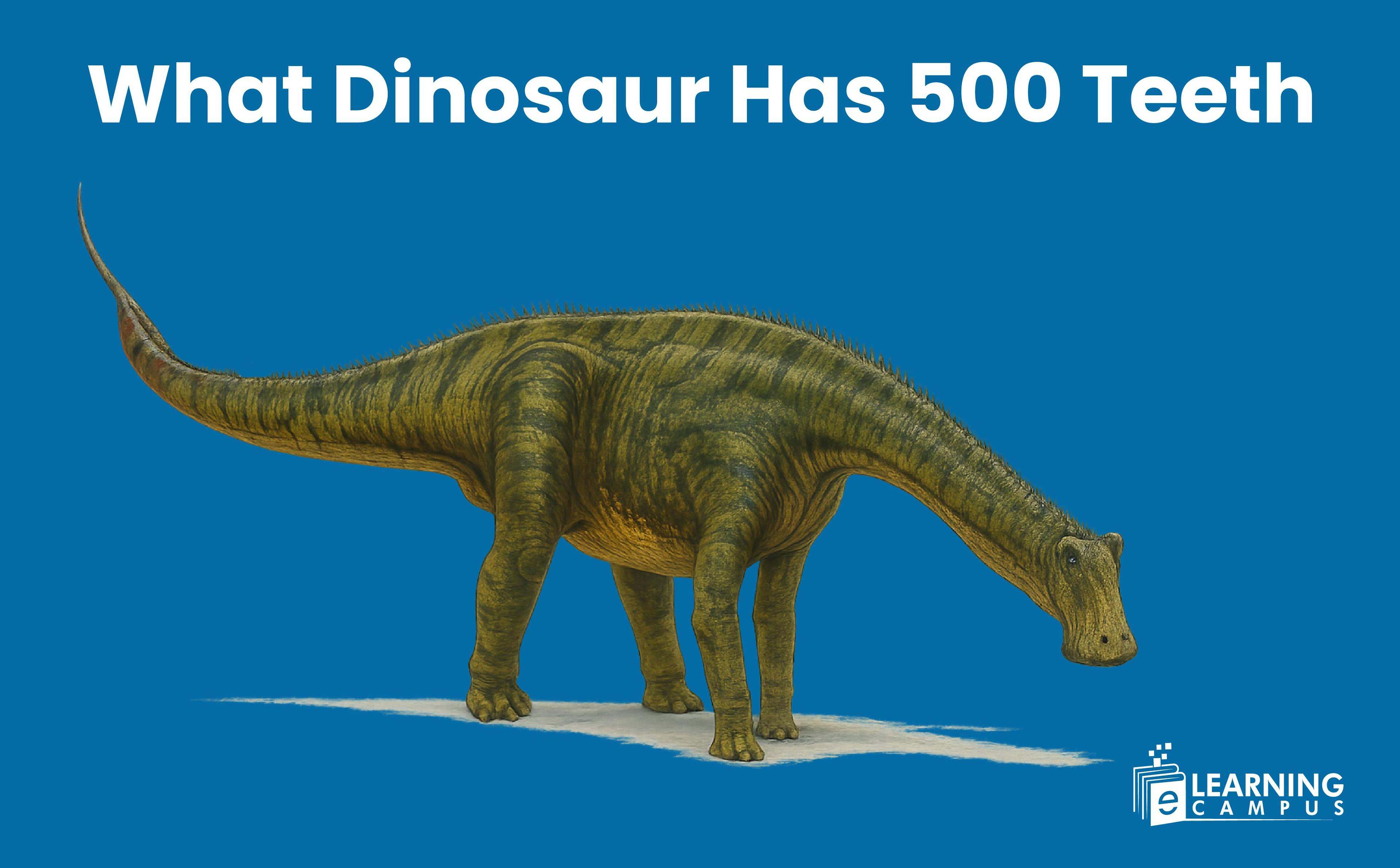
Have you ever wondered which prehistoric giant roamed the Earth with a jaw packed full of 500 teeth? You got it right, it is a species of dinosaur. The dinosaur with 500 teeth is known as Nigersaurus.
Imagine a creature so unique that its dental arsenal alone sparks curiosity and awe. In this blog, we will dive deep to uncover the identity of this toothy titan. What makes this dinosaur stand out, and how did its 500 teeth shape its life millions of years ago?
History of Nigersaurus
Nigersaurus, a dinosaur with 500 teeth, is one of the most unusual dinosaurs ever discovered. It has a truly remarkable feeding apparatus that has fascinated paleontologists since its discovery.
Discovery and Timeline
Nigersaurus was first discovered in the Republic of Niger (West Africa) by paleontologist Paul Sereno and his team. In 1976, the first dinosaur bones were discovered in the Sahara Desert, Niger.
In 1999, American paleontologist Paul Sereno and his team found more fossils. It led to the naming and detailed description of Nigersaurus Taqueti by Sereno and colleagues.
In the late 1990s-2000s, Sereno's team discovered additional fossils. It included a well-preserved skull that provided a much clearer picture of the dinosaur's anatomy.
Naming
The Nigersaurus was named in 1999 by American paleontologist Paul Sereno and his colleagues. The name ‘Nigersaurus’ means ‘lizard from Niger,’ and the species name is Nigersaurus Taqueti, honoring French paleontologist Philippe Taquet, who first discovered fossils in the region.
It is also known by its nickname "Mesozoic cow".
Age and Environment
This dinosaur lived during the Middle Cretaceous period, approximately 100-94 million years ago. It was then a lush, tropical environment with rivers, lakes, and abundant vegetation. The fossils come from the Elrhaz Formation in Niger's Sahara Desert.
Physical Characteristics of Nigersaurus
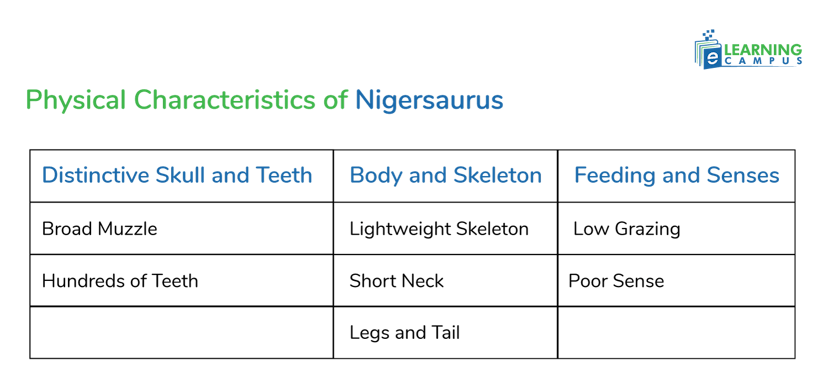
Nigersaurus was a medium-sized sauropod, measuring about 30 feet (9 meters) long and weighing roughly 4 tons. It had a wide, flat, straight-edged muzzle filled with more than 500 teeth in columns. It helped to feed on low-lying vegetation.
However, its most striking feature was its extraordinary skull and dental arrangement.
Distinctive Skull and Teeth
- Broad Muzzle: Nigersaurus had an unusually broad, squared-off jaw, giving it a wide, flat, and straight-edged muzzle. It resembles a vacuum cleaner.
- Hundreds of Teeth: Over 500 teeth were arranged in dental batteries (stacks of replacement teeth) in columns along the front edge of its jaw. These are 15 times more than the human teeth, a set of 32.
These teeth were constantly replaced to maintain efficient grazing on low-lying plants.
It could replace each tooth every 14-21 days, making it one of the fastest tooth-replacing vertebrates known.
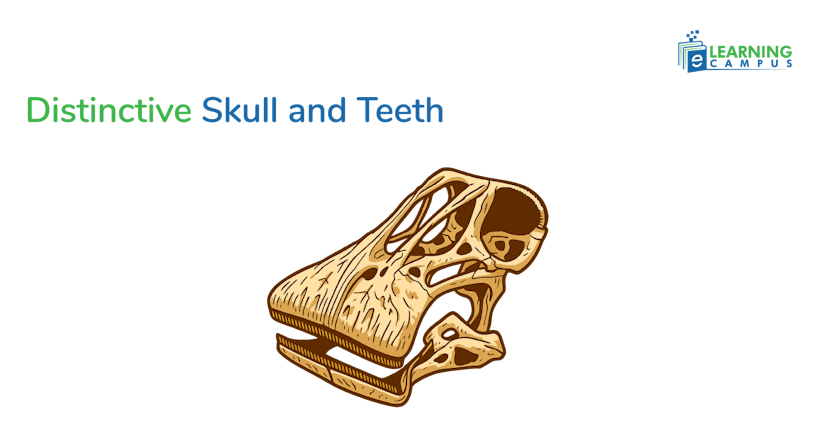
Body and Skeleton
- Lightweight Skeleton: Nigersaurus had a remarkably light skeleton, with some vertebrae so thin they were described as airier than bone, potentially allowing light to pass through them.
- Short Neck: It possessed a relatively short neck and 13 cervical vertebrae, unusual for a sauropod, which typically have long necks.
- Legs and Tail: Nigersaurus had short, strong legs, with the front legs being approximately two-thirds the length of the hind legs. It also had a long tail.
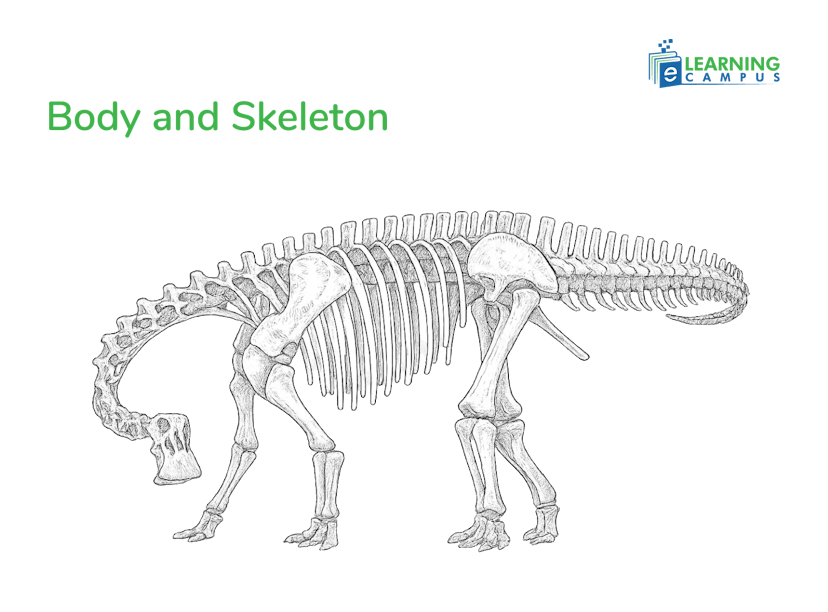
Feeding and Senses
- Low Grazing: The wide, straight-edged muzzle and hundreds of teeth were adaptations for sweeping its head back and forth close to the ground to hoover up low-lying vegetation like ferns and horsetails.
- Poor Sense of Smell: Despite having a fleshy snout and large nostrils, Nigersaurus had an underdeveloped olfactory region of its brain that indicates a poor sense of smell.
Nigersaurus Pronunciation
The Nigersaurus has several possible pronunciations. It depends on whether you emphasize the first or second syllable. It also depends on whether you use a hard 'j' or soft 'zh' sound for the 'g' in Niger.
- ny-JER-sore-us: This is a common pronunciation that directly reflects the country's pronunciation.
- Nye-jer-sore-us: This variation uses a longer 'i' sound in the first syllable.
- ni-ZHAIR-sore-us: It can also be pronounced with a softer 'zh' sound, similar to the French pronunciation of Niger. It is common in scientific contexts.
- The Americans pronounce it as nai·jr·saw·ruhs
Classification of Dinosaur With 500 Teeth
Animals are classified based on different characteristics, known as the classification of living organisms. Every organism is also given a scientific name. The scientific name of Dinosaur with 500 Teeth, Nigersaurus, is Nigersaurus Taqueti.
The Linnaean classification of Nigersaurus Taqueti is as follows:
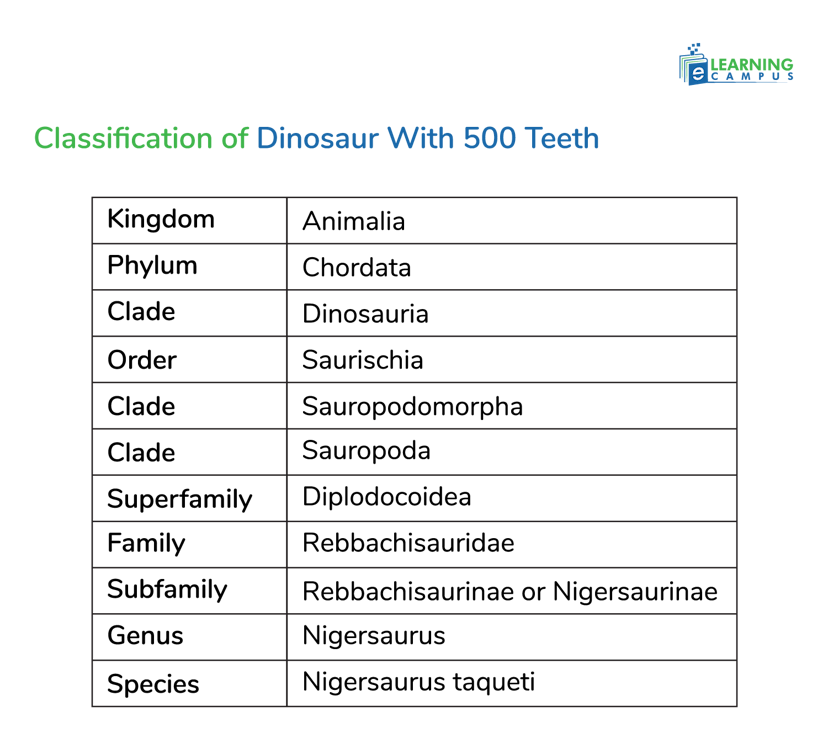
- Kingdom: Animalia
- Phylum: Chordata
- Clade: Dinosauria
- Order: Saurischia
- Clade: Sauropodomorpha
- Clade: Sauropoda
- Superfamily: Diplodocoidea
- Family: Rebbachisauridae
- Subfamily: Rebbachisaurinae or Nigersaurinae
- Genus: Nigersaurus
- Species: Nigersaurus taqueti
How did Researchers Piece Together Nigersaurus
Scientists discovered bones from multiple Nigersaurus individuals at the dig site in Niger. But they never discovered one complete skeleton. Instead, they had a collection of scattered bones. They found some skull pieces here, neck bones there, leg bones from another spot.
The Use of Digital Technology
In 2007, researchers used an innovative approach that was cutting-edge at the time. They used digital technology to uncover the facts.
- CT Scanning: They took all the Nigersaurus bones they had collected and put them through CT scanners. This created detailed 3D digital images of every bone.
- Digital Reconstruction: Using computer software, they could then scale all the bones to the same size and virtually assemble them into a complete skeleton. This was one of the first times paleontologists had used this high-tech method to reconstruct a dinosaur.
What the Technology Revealed
Head Position: The CT scans showed the inner ear structure, which acts like a natural level or balance system. This told researchers that Nigersaurus naturally held its head tilted downward toward the ground. It was perfect for its ground-browsing lifestyle.
Brain Structure: The digital scans revealed that Nigersaurus had a relatively small brain area dedicated to smell. This suggests the dinosaur wasn't very good at detecting odors. It probably couldn't smell predators approaching or locate the best plants by scent.
Since Nigersaurus was a constant grazer that fed on abundant low-growing plants all day long, it didn't need a keen sense of smell to find food. And with its eyes positioned high on its head, it could watch for danger while keeping its mouth close to the ground.
This technological approach allowed scientists to understand not just what Nigersaurus looked like, but how it lived and behaved, all from scattered fossil pieces.
Conclusion
The dinosaur with approximately 500 teeth is the Nigersaurus. It was a herbivorous sauropod from the mid-Cretaceous period that lived in Niger, Africa. Its most distinctive feature was a broad, flat muzzle packed with these numerous, continuously replaced teeth, which formed dental batteries for efficient scraping of low-lying vegetation.
Make Science Lessons Easy for You
Are you struggling with your science lessons and want to learn with an experienced tutor? We can help you. We have professional online science tutors with years of experience in teaching students. You will get personalized instruction with targeted exam preparation.

